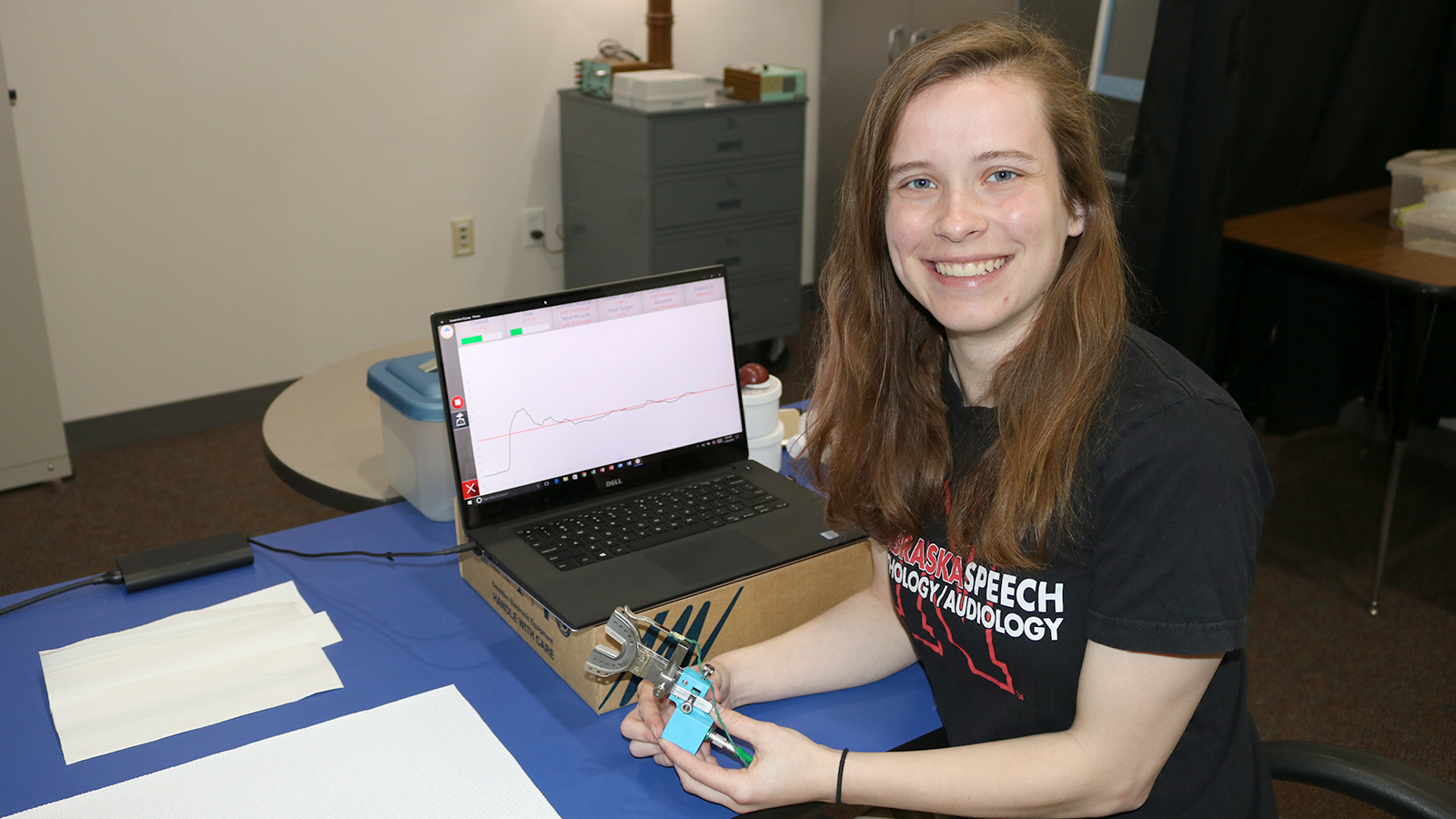
Michaela Sullivan grows research understanding through master’s thesis option
03 May 2019 By Kelcey Buck
As an undergraduate student at the University of Nebraska-Lincoln, Michaela Sullivan completed an honors thesis with Steven Barlow as her mentor. When she began in the Master of Science program in speech-language pathology at Nebraska, it only made sense for her to choose the thesis option and continue working with Barlow.
Sullivan has now completed that thesis, “Oral Angle Ramp-and-Hold Isometric Force Dynamics in Young Neurotypical Adults,” and will be among the graduates walking across the stage May 3 at Nebraska’s graduate commencement ceremony at Pinnacle Bank Arena.
For her master’s thesis, Sullivan chose a topic she had not previously researched with Barlow, who is the Corwin Moore Professor in the Department of Special Education and Communication Sciences.
“I’ve worked on a couple different lines of research with Dr. Barlow,” Sullivan said. “This was just one area I had never been part of, so it was fun doing another kind of research focus than I’ve done in the past.”
Sullivan collected data from 46 neurotypical adult participants who held a specially designed 3-D printed dental tray in their mouths using their jaw muscles. The tray was equipped with a miniature sensor designed to sample force activity produced by several groups of muscles at the corner of the mouth.
Participants completed four sets of 10 attempts to squeeze the sensor by puckering that side of their mouths to match a target line they viewed on the computer screen. Each attempt required the participant to apply force to ramp up to the line, hold for about five seconds, then relax. They completed the four sets on one side of the mouth, before switching the tray so the sensor was on the other side of the mouth for another four sets.
“No one has really done that kind of measurement on perioral muscles at the oral angles before, so we were trying to gather preliminary results,” Sullivan said. “We want to understand what to expect for someone that is neurotypical so that then we can eventually compare it to clinical groups, including survivors of cerebrovascular stroke, traumatic brain injury, ALS, and peripheral motor neuropathy.”
Sullivan found significant force dynamics results for the oral angle in the cohort of young adults, but acknowledged that more research is needed to confirm those findings, as well as expand to include participants across the lifespan.
Although Sullivan doesn’t plan to continue research in the near future, she is grateful for how it has helped her become a more well-rounded speech-language pathologist.
“Overall, I think it’s helpful to understand the process of research because when you’re applying it later, it’s nice to be able to know how it was done and differentiate between a really strong study and maybe one that was lacking,” Sullivan said. “The thesis option gives you that second side of our profession – you get all this clinical experience and now you get some of the research side as well.”
A native of Bellevue, Nebraska, Sullivan will be employed by Omaha Public Schools as a speech-language pathologist at Norris Middle School.
Special Education and Communication Disorders